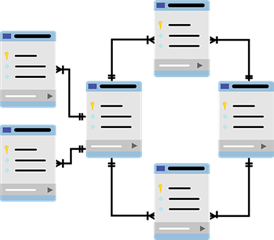October is National Cybersecurity Awareness Month. Many large data breaches have topped news headlines. With all of this great conversation taking place, it's a perfect opportunity for technical stakeholders and business stakeholders to come together and review their Data Governance Policies.
There are 5 Pillars in Data Governance:
- Data Quality
- Data Definitions
- Data Lineage
- Data Modeling
- Data Access
These pillars are essential for defining good Data Governance Policies within your organization.
DATA QUALITY
The main reason that organizations implement Data Governance policies is to improve and maintain the quality of your data. You should define metrics that are easy to quantify so that you can continue to measure the standard of your current data quality compared to the quality that you have in the future.
Some questions you might want to discuss are:
- How can you improve and maintain the quality of your data?
- How do you measure the quality of your data?
- What is the current condition of your data?
- How trustworthy is your data?
- How accurate does your data need to be?
- How well does the data align with your corporate and regulatory policies?
- How do you identify issues with your data?
- How do you fix your data once you determine that it is broken?
- How do you develop strong data quality parameters in your organization that are consistent and repeatable?
ER/Studio Business Architect can help to define Business Processes surrounding how you measure your data quality and the steps that need to be taken should your data quality start to slip beneath your defined data quality thresholds.
DATA DEFINITIONS
Another aspect of Data Governance is Data Definition. Organizations should have good Data Definitions so that everyone is on the same page in regards to what all of the data means and how that data relates to other data elements.
Good questions for Data Definition include:
- How do you define your data?
- How is your data mapped?
- What does your data mean?
- Do you have consistent definitions across your organization?
- Are you in alignment with terms and lexicons?
- How do you find the right elements to interact with?
ER/Studio Enterprise Team Edition includes Team Server which will allow you to create data definitions that can easily be published out to your organization so that everyone has a clear idea on how terms are used throughout the data elements in your system.
DATA LINEAGE
Data Lineage allows an organization to track data from its origination point to its final destination. Data lineage identifies the different processes that affect that data element. It also tracks the metadata associated to that data element.
Things to consider in regards to Data Lineage:
- What happens to your data over time?
- How is your data used?
- What can the data be used for?
- Where can the data be used?
- What does the data produce?
- What does the data consume?
- What rules does the data follow?
- What associations are there between data elements?
ER/Studio Business Architect can help to define Business Processes that track the flow of information through the processes in your system. ER/Studio Data Architect can help to track your data lineage and your metadata in greater detail.
DATA MODELING
Data Modeling allows you to design your data in the way that it needs to be. It allows your organization to be more consistent. It allows your organization to see all of your data elements in a cohesive picture.
Questions that you should ask in regards to Data Modeling:
- What does your data look like?
- What controls and audits are put in place to ensure compliance?
- What metadata needs to be captured?
- Are there places where you can reduce redundancy?
- Is your data consistent?
ER/Studio Data Architect is a robust solution for all of your data modeling needs.
DATA ACCESS
Organizations need to know who is accessing their data and how often. Good data access policies can keep your organization from falling prey to data breaches. Your organization needs to know who can make decisions regarding the use of your data.
Questions you should consider are:
- Who can access your data?
- How is your data protected?
- How is your data stored?
- How is your data managed?
- Who can influence your data?
ER/Studio Business Architect can help to define Business Processes that track access points throughout your system. ER/Studio Data Architect can help add metadata to your data models to identify who should be accessing information during which point in the process. ER/Studio Data Architect also allows you to identify sensitive data in models with security impact and privacy level.
CONCLUSION
Organizations need to review their Data Governance policies on a regular basis. With a good Data Governance process in place issues can be quickly addressed and resolved in a repeatable manner. Your organization should define how data quality is measured, how your data is defined, where your data goes and how it changes as it moves through your system, what your data looks like and who should be accessing your data.
Using tools like ER/Studio Business Architect, ER/Studio Data Architect and ER/Studio Enterprise Team Edition can help you to put Data Governance policies into place in your organization quickly.





